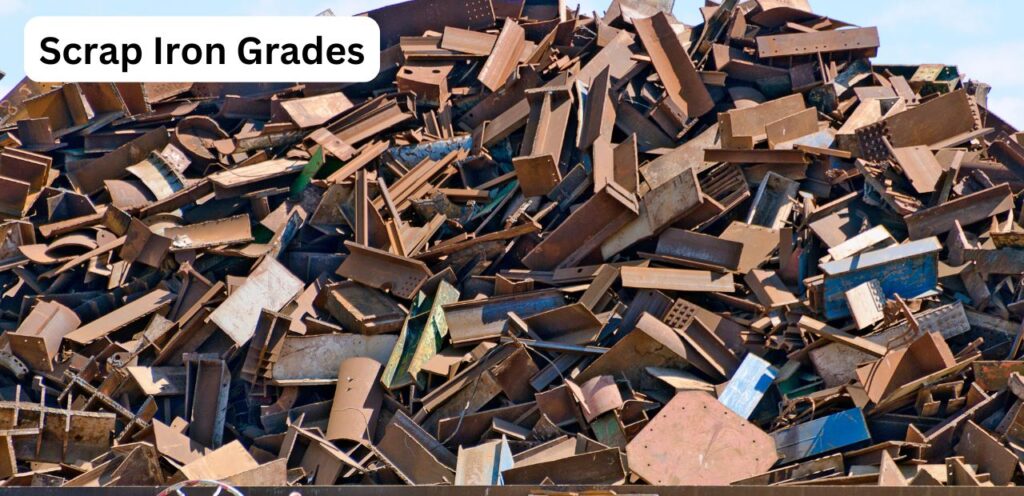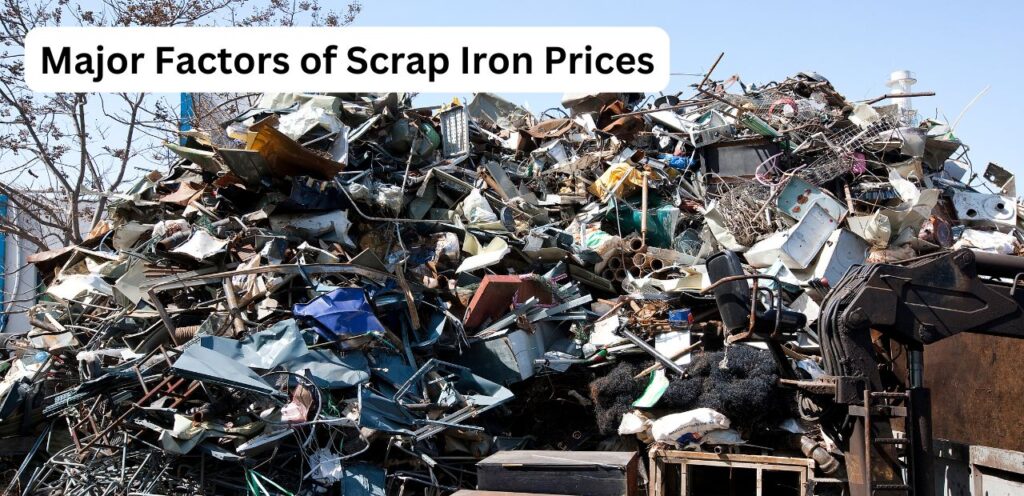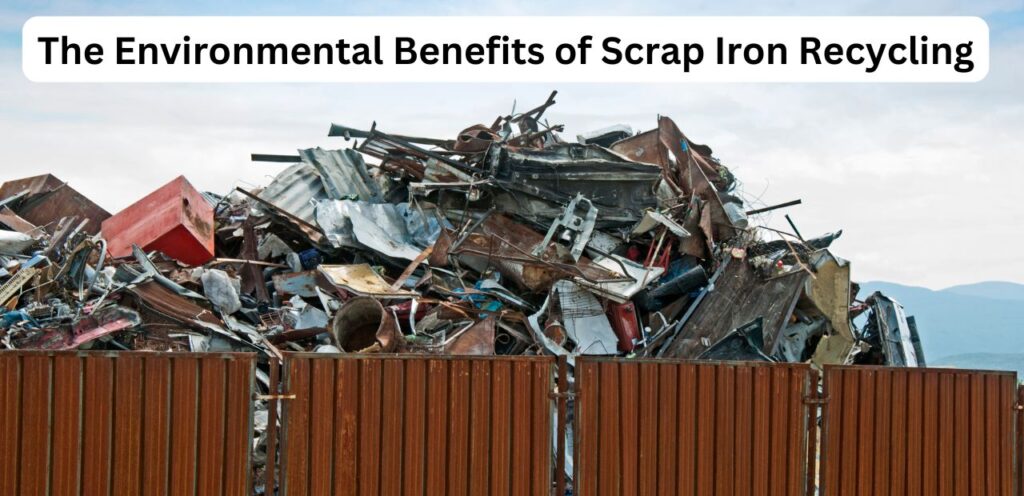The scrap iron prices are given below.
Today Scrap Iron Prices
| OA Plate & Girder | £185 – £215 per tonne |
| No.1 Old Steel Scrap | £160 – £195 per tonne |
| No.2 Old Steel Scrap | £155 – £185 per tonne |
| 5C Light Iron | £110 – £140 per tonne |
| 7B Turnings | £100 – £110 per tonne |
| 8B Mixed Steel Cuttings | £150 – £175 per tonne |
| 9-10 Cast Iron | £145 – £160 per tonne |
| Scrap Cars | £105 – £145 per tonne |
Scrap Iron Grades

Scrap iron comes in various grades, each with distinct characteristics and value. The most common grades include cast iron, wrought iron, and steel scrap. Cast iron, often from old machines, car parts, and household items, is dense and brittle. Wrought iron, on the other hand, is more malleable. It is mainly found in ornamental structures, fences, and vintage architecture. Steel scrap is the most abundant. It includes both ferrous and non-ferrous materials. It is further categorized by its carbon content and alloy composition.
The grade of scrap iron significantly influences its market value. Higher-grade materials, like clean cast iron or pure steel scrap, usually cost more per pound. However, lower-grade materials with impurities or mixed metals may fetch lower prices.
Their lower value reflects the extra processing needed to extract usable metal. These grades are crucial for anyone in the scrapping industry. They affect profitability and recycling efficiency. Also Look at the Scrap Metal Prices by Scrapsy.
Major Factors of Scrap Iron Prices

Several key factors determine scrap iron prices. This makes the market dynamic and unpredictable. A key factor is global demand for iron and steel. It is driven by industries like construction, automotive, and manufacturing. As demand for new steel products rises, so does the demand for scrap iron as a raw material in steel production. This drives up prices.
Another critical factor is the availability and cost of raw materials. If new iron ore mining becomes costly, scrap iron is better. Geopolitical issues, environmental rules, and supply chain disruptions may cause the rise in mining costs. Also, energy costs, transport expenses, and labor rates affect prices. Close monitoring of these factors can help scrap yards and traders. It can help them make informed decisions and optimize operations in response to market conditions.
Reliable Scrap Iron Prices
Access to accurate and timely data is essential for anyone involved in the scrap metal industry. Scrap iron prices can vary widely. They depend on location, the scrap yard, and the materials traded. To navigate this variability, many industry pros use apps like iScrap. They provide real-time pricing, charts, and market reports.
These tools let scrappers, recyclers, and buyers compare prices across regions. They can track market trends and make informed decisions using the latest data. For those who often deal with scrap iron, reliable pricing info is vital. It is key to staying profitable. Staying informed about market trends helps businesses. They can negotiate better deals, adjust pricing, and increase margins.
The Environmental Benefits of Scrap Iron Recycling

Recycling scrap iron helps the environment. It is vital for sustainable development. Recycling scrap iron reduces the need to mine new iron ore. That process is energy-intensive and causes deforestation, habitat destruction, and high carbon emissions. Using recycled scrap iron as a raw material can help industries. It can reduce their carbon footprint and conserve natural resources.
Also, recycling scrap iron reduces landfill waste. It can otherwise contaminate soil and water. Recycling metal uses much less energy than making new metal from raw ore. This saves a lot of energy. It lowers production costs and supports efforts to combat climate change. So, scrap iron recycling is vital. It boosts the economy and helps the environment.
Conclusion
The scrap iron market is complex. It is affected by many factors, from global demand to environmental concerns. Anyone in the scrap iron industry must understand a few things. They need to know the different grades of scrap iron. They must also know the factors that affect its price. Finally, they must know the importance of reliable pricing information. Also, recycling scrap iron helps the environment. It is key to a sustainable future.
Staying informed and using the right tools can help scrappers and recyclers. It can maximize their returns and support a circular economy. As the world focuses on sustainability, scrap iron’s market role will likely grow.
